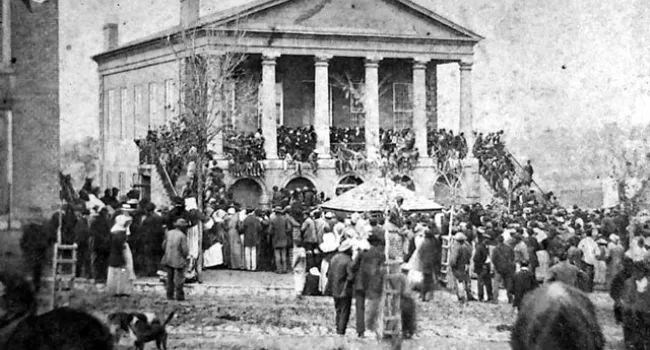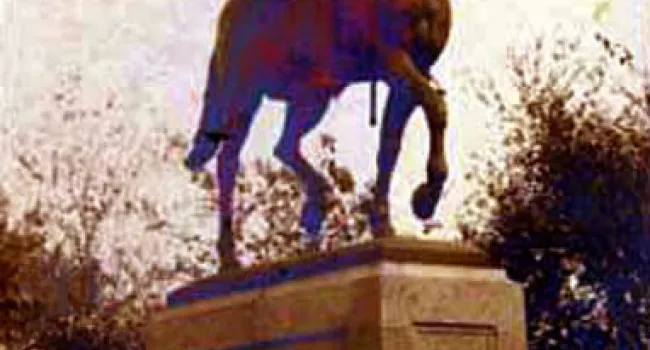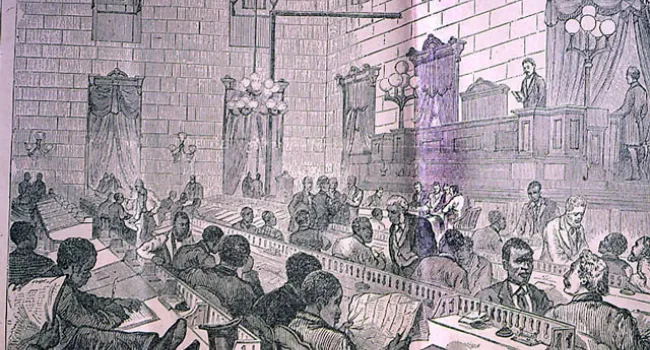
This "composite photograph" brings together 63 members of the 1868 Reconstruction legislature of South Carolina. Of that body, 50 were African-American, 30 were white. Colonel James G. Gibbes of Columbia thought it important to make a record of the members, and persuaded individuals to sit for their photographs. He then re-photographed the images together. In 1895, Benjamin R. Tillman used this composite photograph as part of the propaganda effort in his successful campaign to disenfranchise African-American voters (see The Constitution Of 1895). Although, in the South as a whole, some of the "radical" state governments were good, South Carolina's was marred by corruption, bribery, election fraud, waste and extravagance. Not all of the legislators were corrupt. Lieutenant Governor Alonzo J. Ransier, an African-American man respected even by those critical of Radical Reconstruction, called on members of his race to work honestly, justly, and economically, warning them that unworthy African- Americans would be remembered as the rule rather than the exception.
Courtesy of the South Caroliniana Library.
Standards
- This indicator was designed to encourage inquiry into how new state and federal Progressive legislation affected individuals and businesses in South Carolina and the U.S. The indicator was also designed to promote inquiry into the new perspectives that emerged regarding social and political change.
- This indicator was developed to encourage inquiry into how the former planter class, African Americans, women, and others adjusted to, gained, lost, and/or regained position and status during Reconstruction. This indicator was also written to foster inquiry into how South Carolina worked with a stronger federal government and expanding international markets.
- 8.4.CC Analyze continuities and change in the African American experience in the period of Reconstruction and Jim Crow eras within South Carolina.





